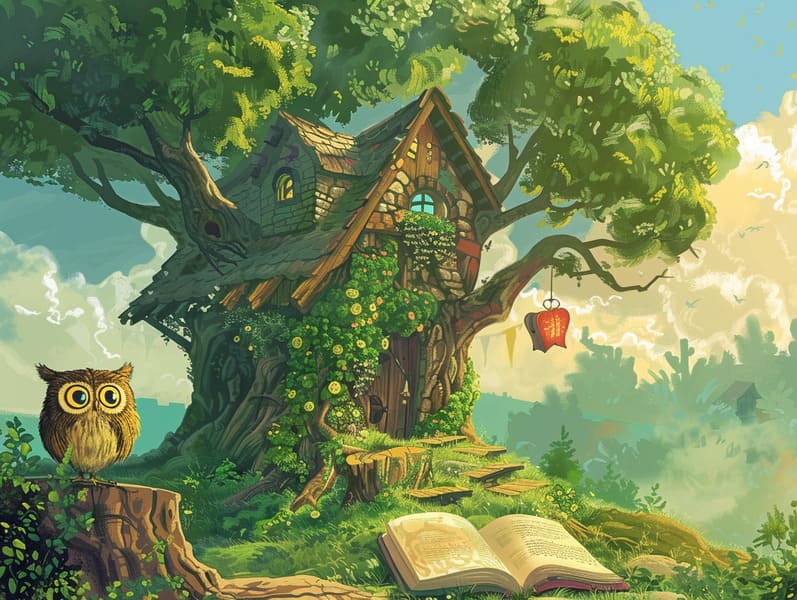The Genesis of Children's Fairy Tales and Their Unending Grandeur.
The Genesis of Children's Fairy Tales and Their Unending Grandeur.
Blog Article

Traditional fairy tales have deep roots. These tales have been whispered from one generation to the next far before they were ever transcribed. They arose from a variety of civilizations, including American traditions. They were initially conveyed among grown-ups, often carrying themes and messages relevant to the societal norms and beliefs of the time.
The renowned Brothers Grimm, Jacob and Wilhelm, were among the first to collect many of these beloved tales. Their volume, "Grimm's Fairy Tales," included tales like "Cinderella," "The Bread Crumb Trail," and "Little Snow White," which have since become pillars in the world of traditional fairy tales. Similarly, Hans Andersen's whimsical narratives, such as "The Mermaid," and "The Duckling's Story," have stolen hearts worldwide, solidifying their place in the pantheon of classic fairy tales.
Even though they are old, these tales remain as significant as ever, especially as children's bedtime stories. These magical stories are now available in various formats, including colorful picture books, charming animations, and web-based fairy tales.
Their continued relevance can be credited to several captivating elements:
Life Lessons: Old fairy tales often impart important moral lessons. Tales like "The Shepherd Boy and the Wolf" teach the value of being truthful, while "The Tortoise and the Hare" point out the traits of steadfastness and humbleness. These tales offer the young clear distinctions between truth and falsehood, molding their moral compass in a mild yet lasting way.
Kindness and Comprehension: Traditional fairy tales frequently include characters facing struggles and tests, inciting readers to comprehend with their struggles and rally behind their triumphs. For instance, "Beauty and Her Beast" points out the importance of seeing beyond looks to appreciate the inner self of a soul, nurturing warmth and understanding.
Cultural Perception: Many timeless fairy tales are interwoven with the cultural contexts from which they came. Exploring these stories can provide illuminating insights into different backgrounds, building a sense of global appreciation and perception.
Fantasy and Imagination: The supernatural elements in classic fairy tales—wizardry and magic—enhance children’s fantastical thinking. These tales bring readers to magical realms, unleashing inventive ideas and a sense of curiosity that lasts a lifetime.
Ancient fairy tales are not only bewitching but also pedagogical. They serve as charming tools in enhancing various mind and heart abilities in the young. When traditional fairy tales are narrated, they strengthen speech development by bringing new lexicon and complex sentence structures. This practice also develops auditory skills and concentration, as young ones pay close attention, enthusiastic to see what happens next.
Furthermore, deliberating the themes and characters of ancient fairy tales can promote thinking skills and problem-solving abilities. Children learn to recognize patterns, expect results, and these guys figure out cause and effect. These examinations also benefit the young utter their thoughts and feelings, strengthening their emotional intelligence.
In today’s digital era, the availability of online fairy tales has made these fairy tales more accessible than ever. Web-based platforms and web apps provide huge assortments of popular fairy tales that can be read or listened via anytime, anywhere. Fairy tales narrated are particularly well-liked, presenting an charming way for kids to experience these mesmerizing stories. Narrated books and voiced videos bring characters and settings to life, often enhanced by enchanting audio effects and tunes that elevate the narrative experience.
The everlasting appeal of traditional fairy tales lies in their ability to adjust to current eras while staying true to their core messages. Contemporary takes of these tales often include more inclusive characters and modern settings, making them relevant to today’s audience. However, the core values of braveness, benevolence, and righteousness remain unchanged, continuing to connect with young readers of all ages.
Classic fairy tales also offer a sense of coziness and closeness. They impart upon a well-structured narrative with a evident beginning, middle, and end, often closing with the culmination of conflicts and the triumph of righteousness over wickedness. This predictability can be reassuring for kids, proffering a sense of firmness in an shifting world.
Timeless fairy tales continue to entrance and edify new generations, maintaining their wonder and pertinence in modern society. As children's bedtime stories, they make available a perfect blend of captivation and insight, sustaining moral values, empathy, and creativity. The accessibility of digital storybooks and the prevalence of fairy tales told out loud validate that these classic tales remain accessible to new generations.
By retaining and conveying these stories, we continue to exalt the rich tapestry of mythology and cultural heritage. Whether you are viewing a vibrantly illustrated book, discovering a web-based collection, or listening through an voice book, the attraction of popular fairy tales is always within reach. These fairy tales reveal of the unending impact of narratives and its ability to unite us across eras and regions.
Regardless if you are enjoying a richly illustrated book, discovering a online collection, or hearing an audio story, the grace of bedtime fairy tales is always within reach.
These tales remind us of the ageless influence of fairy tales and its ability to tie us across centuries and lands, casting a charm that charms and informs alike.